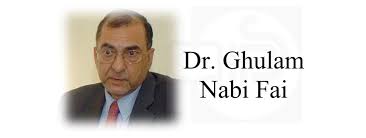 Since 1947, when Kashmir acceded to India, the distance between New Delhi and Kashmiris has been marked by mutual suspicion and a large trust deficit. Over decades, New Delhi eroded Jammu and Kashmir’s autonomy and manipulated its local politics. New Delhi has also viewed Kashmir only through the prism of security, resulting in an ultra-nationalist gaze on the region. In India-administered Kashmir, this has crystallised into a deeply embedded sense of betrayal linked to the historical dispute over the territory. But despite the unhealed wounds and the apprehensions of forced demographic change in India’s only Muslim-majority territory, Kashmiris felt, from time to time, hope for the possibility of a settlement of the Kashmir dispute.
Since 1947, when Kashmir acceded to India, the distance between New Delhi and Kashmiris has been marked by mutual suspicion and a large trust deficit. Over decades, New Delhi eroded Jammu and Kashmir’s autonomy and manipulated its local politics. New Delhi has also viewed Kashmir only through the prism of security, resulting in an ultra-nationalist gaze on the region. In India-administered Kashmir, this has crystallised into a deeply embedded sense of betrayal linked to the historical dispute over the territory. But despite the unhealed wounds and the apprehensions of forced demographic change in India’s only Muslim-majority territory, Kashmiris felt, from time to time, hope for the possibility of a settlement of the Kashmir dispute.
These hopes began to recede when the Narendra Modi-led Bharatiya Janata Party (BJP) government assumed power in New Delhi in 2014, and they faded much faster when the BJP entered into a coalition with the regional Peoples Democratic Party (PDP) in 2015 to rule the state of Jammu and Kashmir. To the dread of Kashmiris, the right-wing BJP made sudden inroads in the state via the consolidation of the Hindu vote bank in Jammu province.
With Modi at the helm since 2014, the Rashtriya Swayamsevak Sangh (RSS), the ideological parent of the BJP, has realised one of its oldest ideological ambitions – the revocation of Article 370 of the Indian constitution, which recognised Jammu and Kashmir’s unique past, endowed it with special status and protected the exclusive rights to land and jobs of the people of the erstwhile state. Moreover, the subjugation of Kashmiri people has increased manifold in the last decade of Modi’s rule, and the tyranny of the state and the military has become more sophisticated.
Even as the number of military cantonments in the territory has increased, locals have been marginalised in businesses and jobs. Termination letters are handed to Muslims on the mere suspicion of a family member of theirs having connections with militant groups, and their properties are attached – seized by local authorities for the ostensible reason that the owners do ot hide or move evidence elsewhere – on the same grounds. Men officially deemed to be terrorists are killed in encounters and their bodies confiscated so that they are denied decent burials. People can be detained, their houses raided and their passports suspended. A reign of terror has been created in which Kashmiris are numbed with a sense of impotence and also reeling with a fear that forbids even a whisper of protest.
The RSS’s pet project
The RSS – in its many offshoots like the Praja Parishad and the Jana Sangh and also its many other affiliates – has not only run concerted campaigns for the complete integration of Jammu and Kashmir with India, but has also called for changing the demography of the territory to shift it towards Hindu domination. The protection or removal of Article 370 was never simply an emotive issue for either Kashmiris or for the Hindu right wing. For Kashmiris, the provision was always crucial to retaining their autonomy and way of life. For the RSS, removing it was an ideological commitment tied to the emotive appeal Kashmir has for Hindu nationalists, as well as a means to disempower Kashmir’s Muslim majority.
The BJP’s desire to integrate Jammu and Kashmir with the rest of India always stemmed from the idea of ending its special constitutional privileges, thus creating an existential crisis for the residents of the state, particularly Muslims. But, even when the BJP first came to power, constitutional experts such as A G Noorani, Faizan Mustafa and Rajiv Dhawan still believed that the safeguards granted to Jammu and Kashmir could not be removed constitutionally. However, the BJP systemically demolished constitutional protections by first seizing power in the state, then marginalising its Muslim majority and finally disenfranchising the entire population.
Using political power in a militarised setting, the BJP began to make inroads into administrative and civil spaces, strengthening its cadres and marking its presence in constituencies in which it had little control till 2014. The political narrative within the state was increasingly infused with shades of saffron, especially in Hindu-majority areas. For example, cow vigilantism, which was growing across the country after 2014, also found its way into the state. In January 2018, when an eight-year-old Muslim girl from the Bakarwal community was raped and killed to instil fear among nomadic Muslims in Jammu’s Kathua district, the Hindu right wing threw its support behind the accused men based on their religion.
Readers like you make stories like this possible. Become a patron and support Himal!
Such Hindutva-tainted developments exacerbated the alienation that Kashmiri Muslims felt from the Indian administration. They were excessively disappointed after the PDP agreed to enter into a coalition with the BJP. The PDP, a largely Kashmir Valley-centric party, had emerged as the single largest party in the Jammu and Kashmir legislative assembly election of 2014, when the valley had supported it on the slogan of keeping Hindu nationalism out of the state. The coalition agreement triggered a rise in both street protests and armed resistance, which spiralled out of control after the killing of a militant commander, Burhan Wani, in 2016. The Indian government responded with brute force, including the use of pellet guns that blinded hundreds of people, including children.
In 2018, the BJP withdrew from its alliance with the PDP and the central government in New Delhi imposed governor’s rule in the state. Taking advantage of the state being directly controlled from the Indian capital, the BJP penetrated deeper into the civil, political, social and economic landscape of Jammu and Kashmir. Meanwhile, the central government escalated the militarisation of the state so as to have even more control and surveillance over the local population. The BJP’s characteristic hyper-nationalistic chest-thumping legitimised this clampdown on Kashmiris in the eyes of the rest of India.
In national discourse, the subjugation of Kashmir was always normalised. Since 2014, everything from the ruthless stamping out of political opposition, strict curbs on the media and the enlargement of the military’s footprint in the territory has been seen as justified. Kashmir has remained, in the national consciousness, a piece of strategic territory crucial to the integrity and sovereignty of the country. The RSS-schooled BJP leaders are adept at putting out this narrative, which erases the people of the region, and they add a further spin. The BJP has successfully presented itself as a messiah protecting India’s honour in Kashmir, while branding everybody else, including its domestic political opponents, as the enemy.
In February 2019, ahead of the last Indian general election, 40 personnel of the Central Reserve Police Force died in a suicide bomb attack in the Pulwama district of India-administered Kashmir, allegedly due to bad security lapses. Instead of questioning the BJP’s claims of protecting Indian interests, driven on at least in part by the Pulwama attack, the Indian electorate voted the party back to power with an even greater mandate than in 2014. When Modi returned to power, it did not take him long to demolish Article 370. On 5 August 2019, the home minister, Amit Shah, announced in parliament the dismantling of the state of Jammu and Kashmir. The state’s special constitutional status was undone and the state itself dismembered into two halves – Ladakh on one hand, and Jammu and Kashmir on the other – with both demoted to the status of union territories. Shah claimed that the move would end terrorism. Modi said he was heralding a new era of development in Kashmir.
In reality, an enraged Kashmir was silenced by stringent official restrictions and a communication ban, under cover of which mass arrests took place and people were denied basic amenities including health care. The congratulatory commentary in mainstream media and social media across India, which skirted the unprecedented suppression of Jammu and Kashmir’s people, was a vindication of the BJP and RSS’s long-held ambition. The Modi government’s triumphalist tone was one of a conqueror for whom neither the Kashmiris nor their rights were material. It became evident that all that mattered was Kashmir’s subjugation, as it served the purpose of consolidating the BJP’s vote bank in the rest of the country.
While the Hindu right wing went into celebration mode on the streets in many parts of India, even netizens invisibilised or denigrated the people of the territory. Senior BJP functionaries participated in the gleeful humiliation of Kashmiris. The Haryana chief minister, Manohar Lal Khattar, talked about “getting brides from Kashmir”; Vikram Saini, a BJP legislator in Uttar Pradesh, spoke about getting the “white-skinned women of Kashmir for Muslim party workers”, as if they were spoils of a war his side had won.
The episode underlined the ideology of the BJP, whose sole relationship to the people of Kashmir is one of contempt. It is this contempt that gets fed into the party’s well-oiled propaganda machinery, its vilification campaigns against Kashmiris and those who sympathise with Kashmiris, further blurring the distinction between the common people and gun-wielding terrorists. The Hindu nationalist narrative is mainstreamed everyday through the ruling dispensation’s near-complete control of the media, whose talk about development, peace and normalcy in Kashmir are far from reality, as well as through officially endorsed propaganda films by Bollywood that show Kashmiris and Muslims more generally in a poor light. The misrepresentation of Kashmir in Indian cinema began with the showcasing of the territory as little more than a beautiful tourism destination in the 1960s. After 1990, countless Indian films have typecast Kashmiris as villains and terrorists. Under Modi, the population has been fed propaganda films such as The Kashmir Files (2022) and Article 370 (2024) that are based on falsehoods, with their twisted lies getting official patronage.
Muslims on the margins
For the Hindu Right, Kashmir is not a project to be pursued in isolation. It is an intrinsic part of the larger Hindutva project of turning India into a Hindu majoritarian nation by instilling hatred against minorities, particularly Muslims, using falsehoods that are mainstreamed, glamourised and popularised among the masses. The Hindutva ideology, which is distinct from Hinduism, is centred around upper-caste Hindu privilege and rests on the theory of a common nation and common race, where national identity is defined by cultural and religious identity and where nationalism fosters the exclusion of all minorities. The birth of this ideology coincided with the demand for a separate state for Muslims during the Indian freedom struggle. The anti-Muslim obsession of this ideology, and the movement that sprang forth from it, is about a hundred years old. Through the decades, it has been painstakingly built up via underground and overground networks that have churned out committed and indoctrinated foot soldiers.
Hindu nationalists, marginalised in the years after India gained independence, came to power by stoking the Ram Janmabhoomi movement, culminating in the 1992 demolition of the Babri Masjid in Ayodhya, which violated constitutional secularism but boosted the BJP’s electoral prospects. Meanwhile, the failures of secular political leaders over the years paved the BJP’s path to victory. In the 1950s, when the RSS mobilised the Praja Parishad agitation in Jammu and Kashmir demanding the state’s integration with India, the Congress-led Indian government of the time treated it with kid gloves. Additionally, the Jammu and Kashmir National Conference’s neglect of the Hindu-majority population of Jammu during its stints in power, rigged elections in the state in 1951, and the failure to bolster secular voices created a vacuum of leadership that was filled by Hindu nationalists. Nationally, socialist leaders like Jayaprakash Narayan allied with the Jan Sangh to oppose Indira Gandhi’s Emergency, lending the Hindu Right respectability.
By the 1990s, propelled by the Ram Janmabhoomi movement, the popularity of RSS affiliates – particularly the BJP – swelled among the Indian masses. The RSS’s ideology promotes open hatred for minorities, cleaving to an idea of nationalism that is not based on constitutional values but is defined by the ostensible purity of the Hindu race. Kashmir – the only Muslim-majority territory in India – forms an important pivot in its project: it is here that all the crucial antagonists of Hindutva – a Muslim-dominated demography, cultural dissimilarity from Hindu norms, and the interests of Pakistan – exist in one place. It is also here that a frenzied hatred can be whipped up against Muslims, seen as embodiments of terrorism and the enemy that is Pakistan, and from this the same hatred can be propagated across the rest of India.
Kashmiri Muslims see themselves as distinct from Muslims elsewhere in India, owing to their distinct cultural and political aspirations. However, after the Babri Masjid demolition in 1992 and the massacre of Muslims in Gujarat in the state’s infamous 2002 riots, Kashmiris began to empathise with Indian Muslims. Meanwhile, Indian Muslims rarely found common cause with the Kashmiris, who bore the brunt of suspicion and targeted discrimination in various parts of the country even in the decades before 2014. After the 1990s, Kashmiri students and businessmen were targeted and harassed in several cities across the country. As just one example of this, they were often refused boarding in hotels and denied house rentals.
Under Modi, Indian Muslims are meeting the same fate as Kashmiri Muslims. They have been openly targeted through cow vigilantism, the peddling of falsehoods, the propagating of myths such as “love jihad” – a conspiracy theory that posits that Muslim men deliberately marry Hindu women to bring about demographic change – and disenfranchisement through the Citizenship Amendment Bill and the National Register of Citizens. This vilification of Indian Muslims has resulted in psychological solidarities between Muslims in Kashmir and the rest of India, nurtured purely by an aggravated sense of victimhood. But beyond the bonds of pain and common religion, the differences between Kashmiri Muslims and Indian Muslims – who, unlike Kashmiris, proclaim their Indianness – remain irreconcilable.
While liberal Hindus are appalled by the targeting of Indian Muslims, they often still vilify Kashmiri Muslims as the “other”. This lack of empathy further allows Hindu majoritarian hatred against Kashmiris to percolate vertically and spread horizontally. Today, Hindu tourists flock to India-administered Kashmir in significant numbers. While their primary purpose may be sightseeing, their behaviour often reflects a conqueror mindset. They openly chant Hindu slogans, display Hindu religious symbols and eagerly pose for photographs beside military installations, soldiers and publicity cutouts of Modi. These images are then shared on social media platforms, glorifying the overwhelming militarisation of Kashmir and depicting it as a conquered territory. Sadly, in this narrative, Kashmiris are largely erased; their presence, memories and perspectives are omitted from both the tourist imagination and the public discourse. If acknowledged at all, Kashmiris are portrayed as beneficiaries of increased tourism in the post-Article 370 world, perpetuating a dynamic of conqueror and vanquished or, at best, of benefactor and beneficiary.
In the past, elections were deemed to be the sole benchmark of democracy and normalcy in Kashmir. Since 2014, no elections to the state assembly have taken place and the assembly itself was dissolved in 2018. This has kept the territory in political limbo. During the 2019 general election, while voters turned up in numbers in Jammu, the disillusioned Kashmir electorate stayed away from polling booths with Srinagar registering a turnout of just 14 per cent. The union territory is voting in five phases in this year’s general election. It is safe to say that the revocation of Article 370 is the main issue in voters’ minds. Modi has tried to swing votes the BJP’s way by promising, during his campaign, that he will reinstate statehood for Jammu and Kashmir. However, for the Hindu right wing, the conquest of Kashmir is a means to achieve a larger end. Kashmir, in its present form, is an experimental prototype that can be scaled up to harass, humiliate and tyrannise Muslims elsewhere in India.








